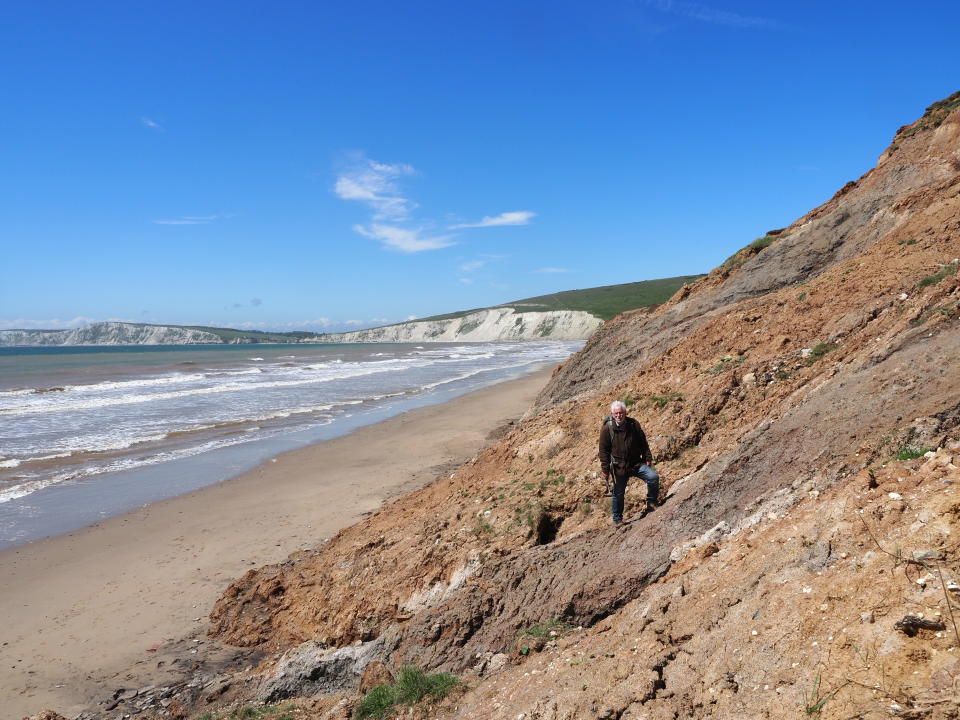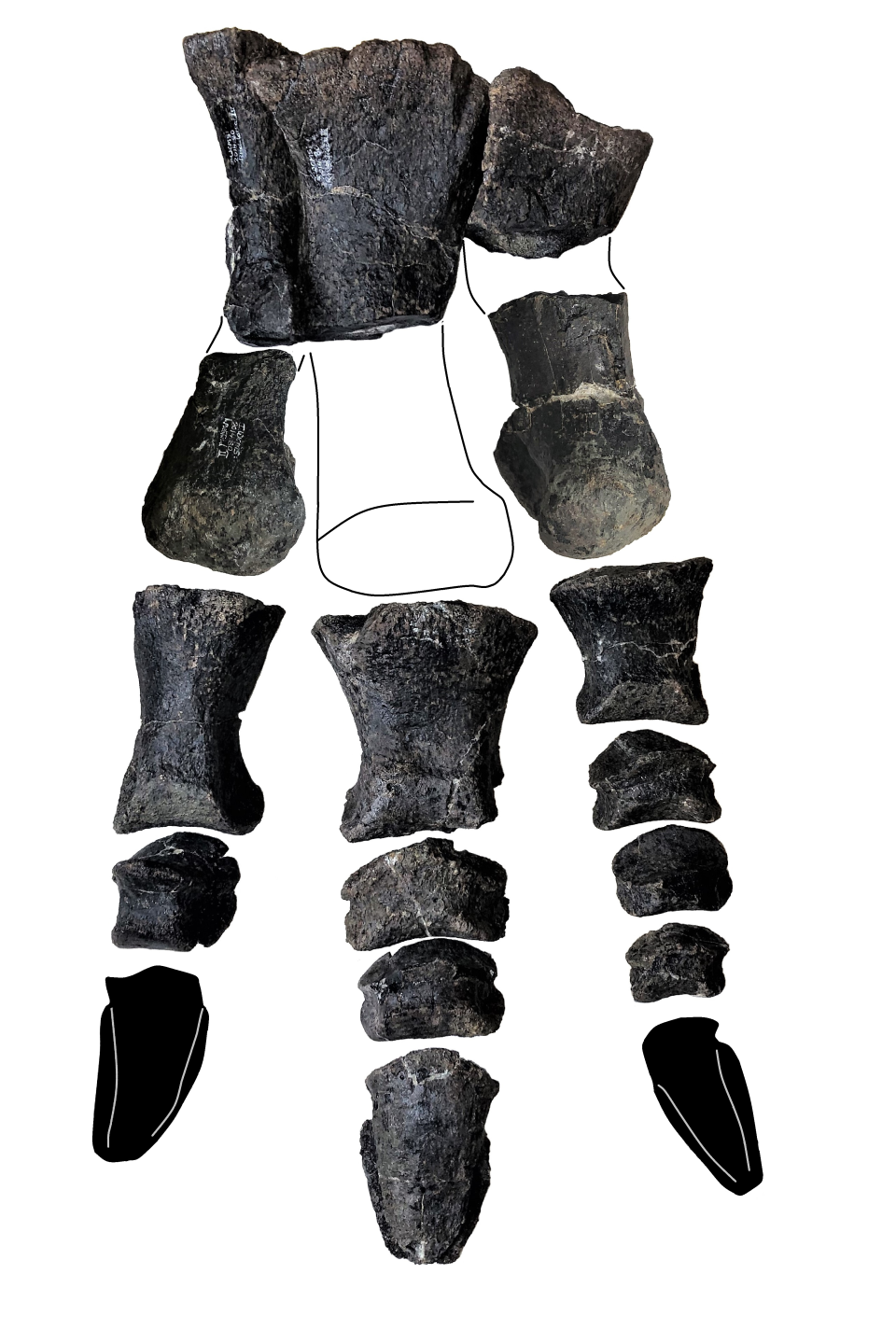‘Most complete dinosaur’ in a century unearthed in the Isle of Wight
A new species of plant-eating dinosaur that was as big as a male American bison roamed the Isle of Wight around 125 million years ago, analysis suggests.
The specimen, unearthed in the cliffs of Compton Bay, represents the most complete dinosaur discovered in the UK in a century with 149 bones in total, researchers said.
Comptonatus chasei, named after late fossil hunter Nick Chase and the place where it was found, would have been a hefty dinosaur, weighing as much as an African elephant.
It belongs to a group of herbivorous dinosaurs known as iguanodontians, large, bulky creatures often described the “cows of the Cretaceous period (145-66 million years ago)” by palaeontologists.
Jeremy Lockwood, a PhD student at the University of Portsmouth, said: “This animal would have been around a tonne (1,000kg), about as big as a large male American bison.

“Evidence from fossil footprints found nearby shows it was likely to be a herding animal, so possibly large herds of these heavy dinosaurs may have been thundering around if spooked by predators on the floodplains over 120 million years ago.”
For the study, published in the the Journal of Systematic Palaeontology, the researchers analysed every part of the fossil, including skull, teeth, spine and leg bones as well as a pubic hip bone “about the size of a dinner plate”.
Mr Lockwood said it is unclear why this hip bone, found at the base of the abdomen, was so big, but added: “It (the bone) was probably for muscle attachments, which might mean its mode of locomotion was a bit different, or it could have been to support the stomach contents more effectively, or even have been involved in how the animal breathed, but all of these theories are somewhat speculative.”
Click below to see the latest South and South East headlines
When Comptonatus was first discovered, the specimen was thought to be different type of dinosaur called Mantellisaurus, three-toed plant-eaters that lived in Britain more than 120 million years ago.
But Mr Lockwood said Comptonatus differed from Mantellisaurus because of the “unique features in its skull, teeth and other parts of its body”.
He said: “Its lower jaw has a straight bottom edge, whereas most iguanodontians have a jaw that curves downwards.”
Dr Susannah Maidment, senior researcher and palaeontologist at the Natural History Museum, said Comptonatus demonstrates fast rates of evolution in iguandontian dinosaurs during that time period.
The work could help researchers understand how ecosystems recovered after an extinction event at the end of the Jurassic Period (200-149 million years ago), she added.

Comptonatus was first discovered in 2013 by Mr Chase, who died of cancer just before the Covid-19 pandemic.
However, because the dinosaur fossil was almost complete, it took Mr Lockwood and his colleagues several years before the specimen could be prepared for analysis.
He said: “I began looking at the specimen six years ago and described it as part of my PhD thesis, which took five years.
“So it was quite a long journey from finding to publication.”
Paying tribute to Mr Chase, Mr Lockwood, who is a retired GP, said: “Nick had a phenomenal nose for finding dinosaur bones.”

He added: “He collected fossils daily in all weathers and donated them to museums.
“I was hoping we’d spend our dotage collecting together as we were of similar ages, but sadly that wasn’t to be the case.
“Despite his many wonderful discoveries over the years, including the most complete Iguanodon skull ever found in Britain, this is the first dinosaur to be named after him.”
Eight extinct species from the Isle of Wight have been named in the last five years.
Mr Lockwood said the latest “remarkable find” shows the Isle of Wight and nearby areas may have once had “one of the world’s most diverse ecosystems”.


